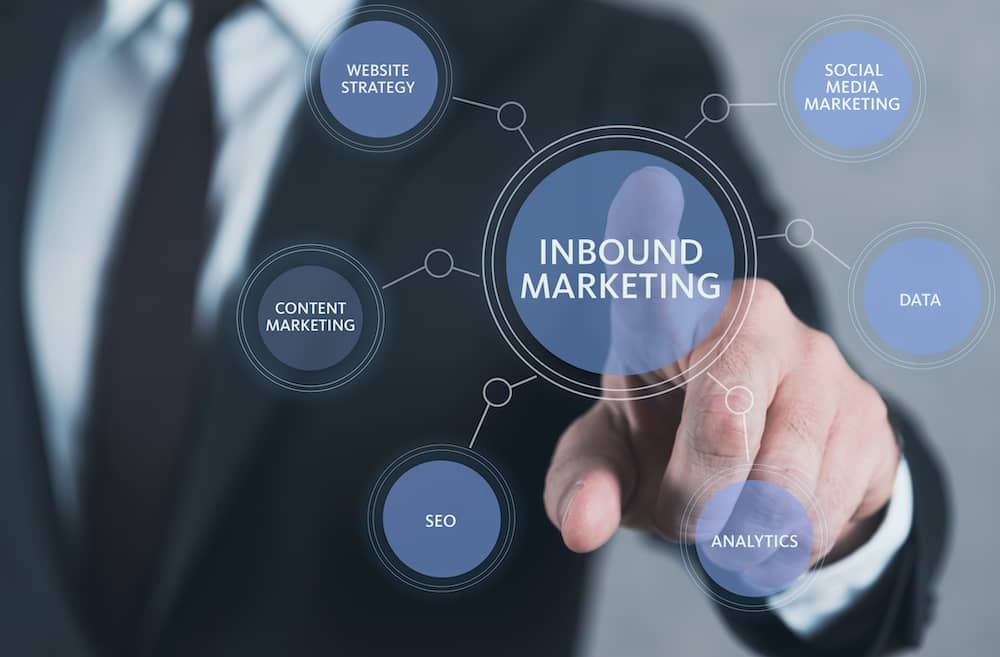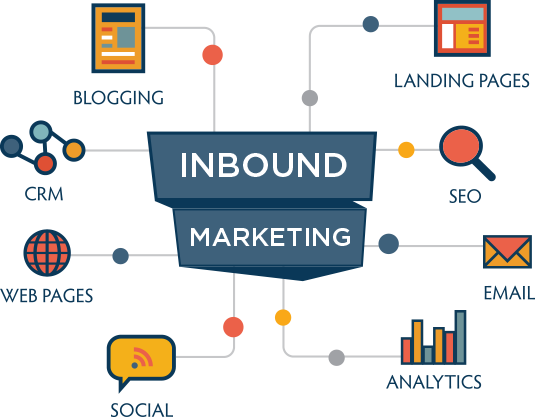| Posted on
Inbound marketing is a marketing methodology that focuses on attracting potential customers to a business or organization through valuable and relevant content, rather than actively seeking out customers through traditional, interruption-based methods. The goal of inbound marketing is to create a meaningful connection with potential customers by providing them with helpful information and resources that address their needs and challenges. This approach aims to build trust, establish authority, and ultimately lead to customer engagement and conversions.
Inbound marketing is often contrasted with outbound marketing, which involves more traditional marketing tactics like cold calling, TV commercials, and direct mail. Here are some key components and strategies associated with inbound marketing:

1. Content Creation:
- High-quality and valuable content is at the core of inbound marketing. This content can take various forms, including blog posts, articles, videos, eBooks, infographics, and more. The content should address the pain points and questions of your target audience.
2. Search Engine Optimization (SEO):
- By optimizing your content for search engines, you increase the likelihood that potential customers will find your content when searching for relevant topics or solutions. This involves using relevant keywords, optimizing meta tags, and creating content that aligns with search intent.
3. Social Media Marketing:
- Sharing your content on social media platforms helps amplify your message and reach a broader audience. Engaging with your audience on social media can also foster conversations and build relationships.
4. Email Marketing:
- Sending targeted and valuable content to your email subscribers can nurture leads, keep your audience informed, and drive engagement.
5. Landing Pages and Calls-to-Action (CTAs):
- Landing pages with compelling offers and clear CTAs encourage visitors to take specific actions, such as downloading an eBook or signing up for a webinar.
6. Lead Generation and Capture:
- Inbound marketing focuses on attracting leads and capturing their information, such as email addresses, in exchange for valuable content. This allows you to continue nurturing these leads over time.
7. Marketing Automation:
- Marketing automation tools help streamline and automate processes like email campaigns, lead segmentation, and personalized content delivery.
8. Customer Engagement and Delight:
- The continuum of inbound marketing persists even after a lead transitions into a customer. Continuing to engage and provide value to customers can lead to brand loyalty, repeat business, and positive word-of-mouth.
9. Data Analysis and Iteration:
- Inbound marketing relies on analyzing data to understand what works and what doesn't. This iterative process allows you to refine your strategies over time based on performance metrics.
Inbound marketing aligns well with the modern consumer's preferences for informative, personalized, and non-intrusive interactions with brands. It's a customer-centric approach that seeks to build long-term relationships by offering valuable solutions and addressing the needs of potential customers throughout their buying journey.
0
0 Comment
| Posted on
Inbound marketing refers to a strategic approach in which businesses attract, engage, and delight customers by creating valuable content and experiences tailored to their needs and interests. Unlike traditional outbound marketing that relies on direct advertising and outreach, inbound marketing focuses on drawing customers organically to a brand through various online channels.
The core philosophy of inbound marketing revolves around providing relevant and informative content that addresses the pain points and queries of the target audience. This content could include blog posts, articles, videos, social media posts, webinars, and more. By creating high-quality, educational content, businesses establish themselves as authoritative sources within their industry, gaining the trust and attention of potential customers.
Moreover, inbound marketing leverages SEO (search engine optimization) techniques to ensure that the content is discoverable when users search for relevant keywords or topics on search engines. This drives organic traffic to the business's website, leading to increased visibility and potential conversions. Inbound marketing also employs strategies like email marketing and lead nurturing to build relationships with prospects over time, guiding them through the buyer's journey and ultimately turning them into loyal customers.
In a nutshell, inbound marketing is all about creating value for customers rather than interrupting them with traditional advertising. By offering valuable content, addressing customer needs, and utilizing digital channels effectively, businesses can attract, engage, and retain customers in a more authentic and sustainable way

0
0 Comment
Student | Posted on
Inbound marketing is a customer-centric approach that focuses on drawing potential customers through valuable content, rather than interruptive advertising. It involves creating informative and relevant content like blogs, videos, and social media posts to address audience needs and queries. This content is optimized for search engines (SEO) to enhance visibility. Inbound marketing also includes strategies like email marketing, targeted landing pages, and lead nurturing to guide potential customers through the sales funnel. By providing valuable information and building trust, inbound marketing aims to attract, engage, and convert customers, fostering long-term relationships and brand loyalty. Regular analysis and adjustments ensure its effectiveness.

0
0 Comment
